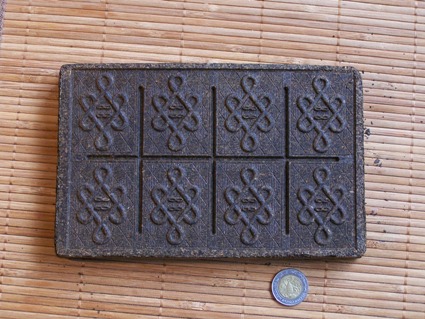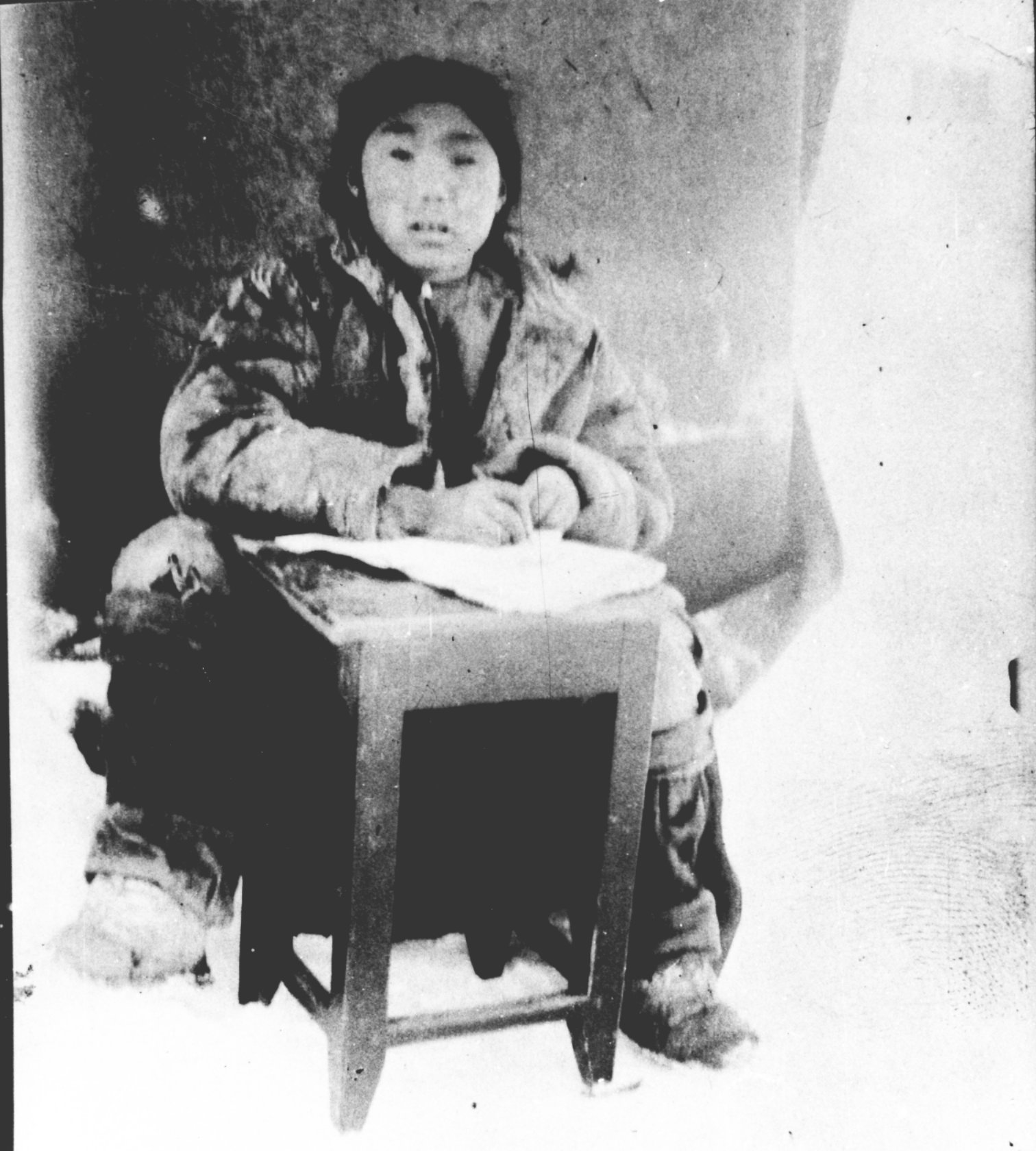
Pedagogy
A BRIEF PRELIMINARY REPORT ON THE AINU SCHOOL IN THE KORSAKOVSKY DISTRICT IN 1903-1904
Activities
I am limiting the content of this document to a brief overview of the school’s activities, since the teacher employed there has not yet sent me a log with all the notes reflecting the daily life of the school and its affiliated dormitory. In accordance with the permit issued by the Chief Wartime Governor [of Sakhalin], the school was housed in a separate building in the village of Naibuchi. Before the school was located there, the building had been inhabited only during the summer months and therefore did not even have a stove. So we had to build a fireplace, repair the doors and windows, and organize bunk beds. This renovation was completed on 1 December, and on 3 January the head manager of the settlement sent 6 benches from a nearby Russian school. The equipment and conditions were plain and simple, but compared to the previous year, it was a big step forward.
The number of students ranged from 6 to 10. They were aged 10-17 years. There was one more, 26-years old, adult student, but not for long. His daughter fell ill and he had to go home, where he continued to learn arithmetic.
The school curriculum covered the same subjects as last year. We had to focus on arithmetic, writing, and reading from books, which went tremendously slowly. I introduced systematic learning of conversation in Russian. All the words appearing in the reading book were translated and the names of objects used in everyday school life were learned by heart. At first it was quite difficult, but with the arrival of the son of an Ainu woman and a Russian peasant at the school, it became much easier. Not knowing the Ainu language, the boy communicated with his colleagues in Russian. Of particular interest to the students was the ability to write Ainu words in the Russian alphabet. The students were also very eager to do grammar exercises, write memoirs, descriptions of their purchases, diaries; they nagged me daily with their various notes.
Another teacher at the school was Tarondzi, an Ainu, who could be counted as a student, because he learned Russian very diligently with me all the time, studying grammar, and becoming proficient in writing and correct pronunciation. Not knowing the principles of teaching, he was obviously far from the ideal of a folk teacher. But for the time being – under my direct supervision – he was quite useful as my assistant.
There was always order in the dormitory, better than one would ever wish for. The children took care of the cleanliness themselves, sawed and chopped wood, shoveled snow off the path leading to the building, and even cooked their own food for a long period. When I realized that the latest activity was taking too much of the students’ time, I had to agree to hire two girls, relatives of the students, for the domestic chores. I tried to persuade them to learn to read and write and even got permission from their parents to start teaching them, but they gave up soon, during the very first class. All the children went to the bathhouse and took care of the cleanliness of their clothes themselves, and their parents willingly sewed the clothes they needed for change.
Adult relatives of the students and strangers visited the school and sometimes sat there for a long time listening to classes or looking with the students through illustrated books that I had acquired for the school.
However, it is extremely regrettable that the first steps of the new work have to be taken during such hard and troubled times. It was also impossible to introduce a craft into the classes, even though it was included in the schedule, and students, their parents and I would consider them very important and desirable in the future.
August 1904, B. Piłsudski
INVENTORY OF DONATIONS AND INCOME ACCEPTED FOR THE AINU SCHOOL IN THE KORSAKOVSKY DISTRICT IN 1903-1904
Notebooks – 100
Pencils – 4 dozen
Ink powder – 2 packets
Cipher boards – 5
Styluses – 20
Rulers – 4
Knife – 1
Paper no. 7 – 1 ream
Pen holders – 3
Pens – 2 boxes
Books for learning to read – 15
Year I – 5
Year II – 5
Tikhomirov, Brief Grammar – 2
Goldenberg, Set of Tasks – part 1-3
Goldenberg, Set of Tasks – part 2-3
Garbov, History of Russia – 2
Kudriavtsev, Arithmetic – 2
Brief Geography – 1
From I.P. Shemanel – Paper no. 6 – 1 ream, pencils no. 4 – 1 dozen
From A.S. Jakubowski A small magnifying glass – 1
From B.O.P. [Bronisław Osipowicz Piłsudski] Towels – 5, scarves – 2
From A.P. Birych – Japanese kettles – 2, sugar – 1 loaf, brick tea – 10 bricks, porcelain cups – 5, saucers for the cups – 5
From settlement manager, P.P. Verzhbenets – cured meat – 2 poods, kerosene – 1 can, school benches – 6

Cash inflows:
From the Chief Wartime Governor – 200 rubles
From A.P. Takay – 1 ruble
From J.P. Kalatz – 2 rubles
From G.P. Shemanel – 2 rubles
From B.O.P. – 50 kopecks
From E.N. Nikolaeva – 1 ruble
From Japanese Consul Nomura – 10 rubles
From I.D. Shreders – 2 rubles
From Dr. Gorshkov – “Niva” magazine for one year
During the school year, 141 rubles 65 kopecks were spent on:
Teacher’s salary – 64 rubles
Food for students in the dormitory – 59 rubles 32 kopecks
Education – 7 rubles 92 kopeck
Stationery products – 1 rubles 7 kopeck
Housekeeping and petty expenses – 9 rubles 34 kopeck
Total – 141 rubles 65 kopeck
That leaves 76 rubles 85 kopecks not spent. Advance bills and documents are presented separately.
[Translated from Russian into Polish by Antoni Kuczyński and from Polish by Piotr Jaskólski]

About his assistants at work, he wrote as follows:
And if earlier our classes were far from the ideal organization of work, now they have turned into repetition courses for those who already know how to read and write a little – the semi-literates. In addition to Tarondzi, who agreed to tour the settlements of Rure, Naibuchi, Ay, Otosan, and Seraroko, one of the older students, more capable than the others, Tuichino, aged 18, started teaching children in his settlement of Siyantsy. An acquaintance, a well-educated exile from the nearby settlement of Nikolaevsk, promised to help him.
Based on:
Antoni Kuczyński, Vladislav Latyshev, “On the Pedagogical Activities of Bronisław Piłsudski (presentation of sources),” Etnografia Polska, vol. XXXVII: 1993, book 2



